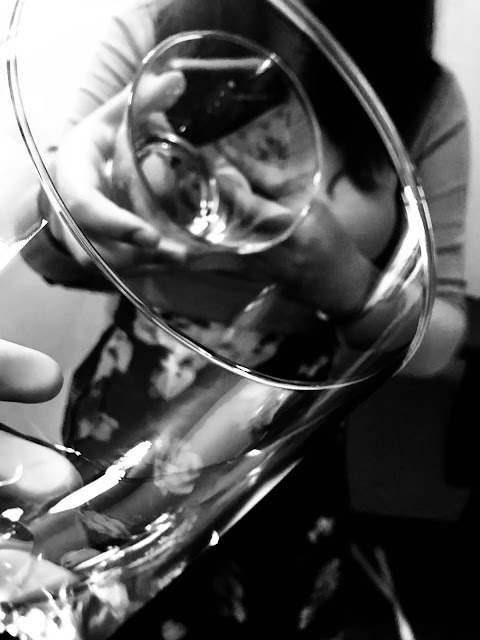A14. Message and Story in Photography
- At this point, it is my hope that you are no longer just taking images to satisfy a class assignment, but are starting to recognize what attracts you and catches your attention when you make photographic images. What are you thinking about when you are shooting? What things tend to catch your attention? When I am shooting I think about what will be a good angle and view point for the people looking at my subject. What catches my attention is lighting and how it reflects on my subject and making sure everything is in perfect alignment down to the facial expressions of my subject.
- Other than a class assignment, what is your point in the images that you take? What kinds of things are happening when you think “that would make a great image?” The point of my images are to capture a story that I will want to remember later on of how I set the subject up and what I was thinking. When I ask myself "what would make a great image" I think of what the person looking a my picture wants to see and how can I set up a picture to be interesting and beautiful to make people want to stare longer and think of the story I want to tell.
- What emotions do your most easily connect with? I easily connect with sadness because the facial expressions are easily shown through their eyes or even their way of stance that is easily noticed.
- Why is the technical part of photography important? The technical part of photography is just as important because you need to find what satisfies the human eye more and what rules will draw eyes to your subject quicker along with editing the picture.
- How far along do you feel that you are in understanding the technical aspects of photography? I feel as if I am very far along in understanding the technical aspects of photography and knowing what settings to set up in certain places and what lighting to use on certain types of photography.
- Do you believe that creativity can be learned? Why or why not? Yes I believe you mind is able to learn to think outside the box and be learned because somewhere in us all we all have ideas and it is what we do with those ideas that make us creative.
- Looking at the two images of the couple dancing the Argentine tango, which image do you think gives a stronger message or story? Gives reasons for your thinking, not just a choice. The second image gives me a stronger message because it focuses on the subject and on one couple dancing which brings emphasis to the story that they have danced together for a while and tell that story through dance.
- How much do you rush through your photographic work? how much do you pause and think? I usually think at what I could do with my setting and subject so I don't usually rush through my photography cause I am thinking of what image would look better and what angles will work. I do usually take time to brainstorm ideas and what would work for me in the environment I am surrounded by.
- Are you using all your senses as you photograph? Which ones are less involved as you shoot? I usually use most of my senses as I am aware of my surrounding like sight and touch. I am less involved in my sense to relax and enjoy what I am photographing rather than taking time to enjoy beauty. I am less involved with the senses of taste and smell in photography.
- Of the two images from the South American countryside, what story or message comes to you from each image? Which story is the more compelling and why? From the first image the story says to me that a mother and her daughter are on an adventure to find something or shelter while enjoying time together. The second image to me tells a story of women working in the country side trying to find food and bring them back to their families. Both these images to me are compelling as they both tell a unique story. However the first image is very pleasing to the eye and falls into the rule of thirds and creates a beautiful contrast of colors.

Comments
Post a Comment